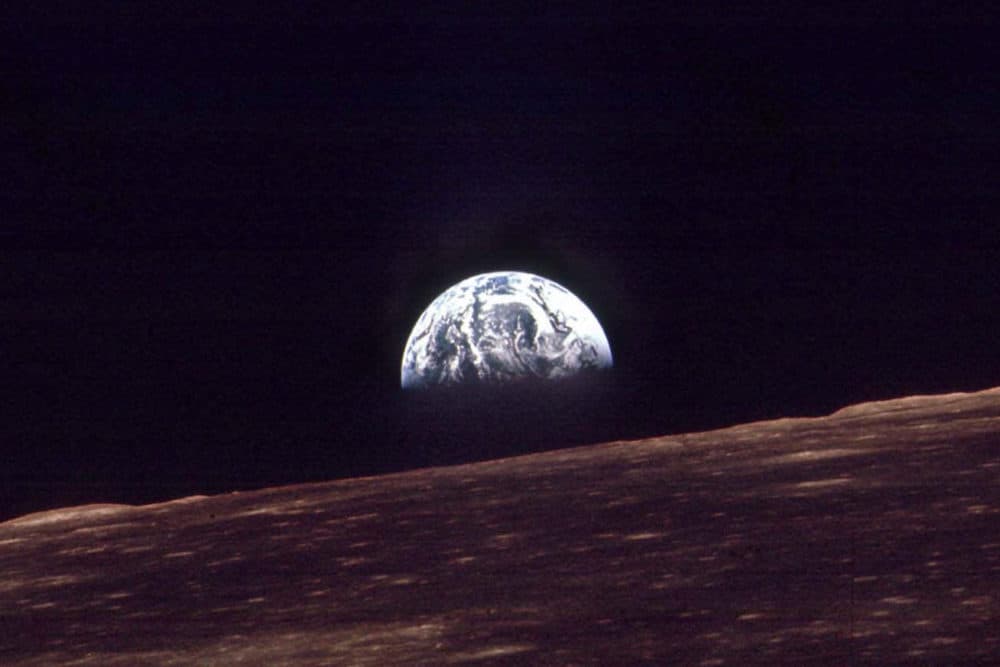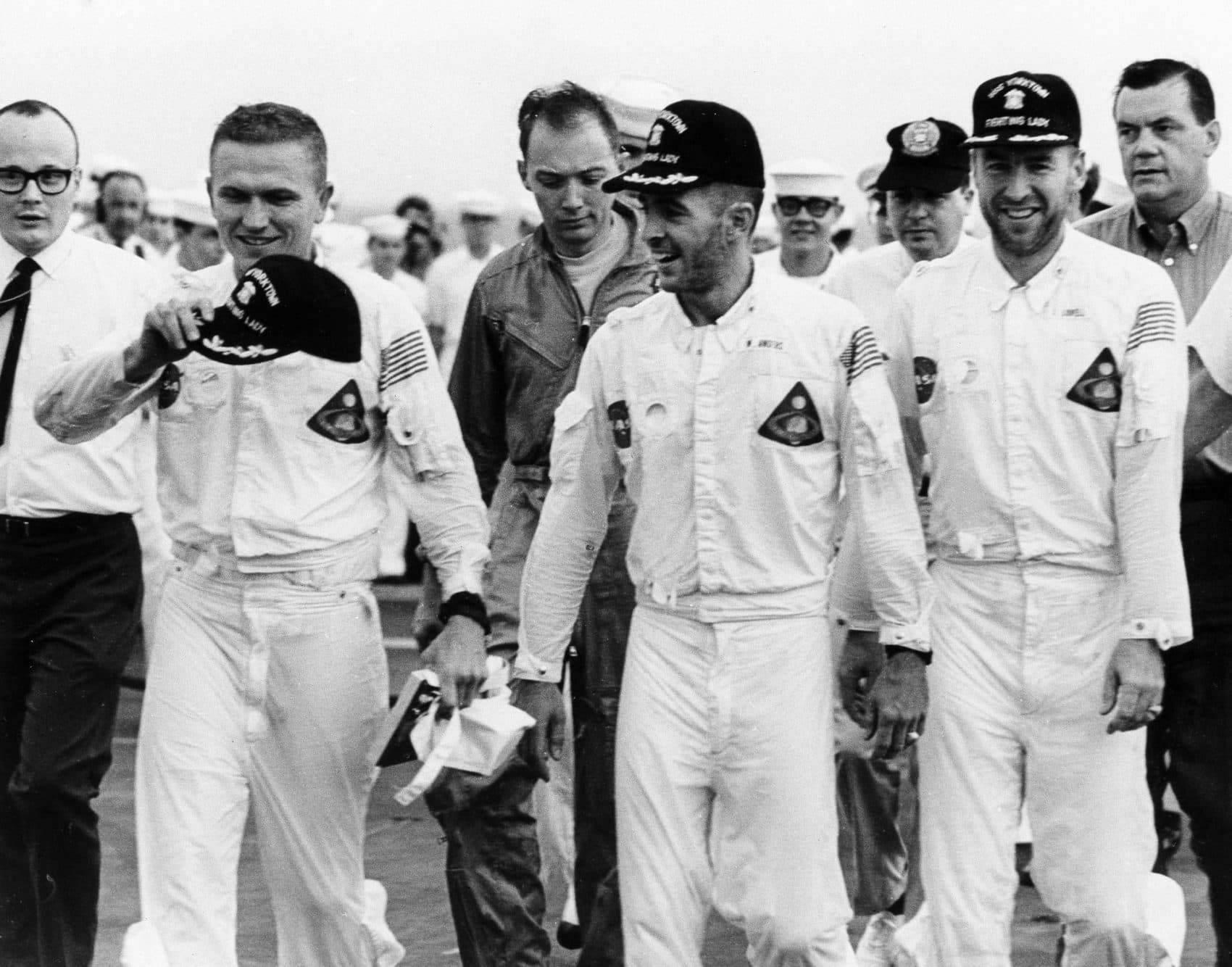Advertisement
Looking Back On NASA's First Flight Around The Moon With An Apollo 8 Astronaut
Resume
With Meghna Chakrabarti
It's been 50 years since the Apollo 8 mission. We take a look back with former astronaut Bill Anders.
Guest
Bill Anders, former United States Air Force officer, nuclear engineer, NASA astronaut and businessman. He, along with Apollo 8 crewmates, is one of the first three persons to orbit around the Moon, on Christmas Eve 1968.

From The Reading List
USA Today: "'No lifeboat': Before Houston had 'a problem,' these Apollo 8 astronauts were first to see far side of the moon" — "It was Dec. 21, 1968, the end of a tumultuous year wracked by political, racial and generational strife.
"The number of U.S. troops killed in action in Vietnam had surged past 30,000. Brutal riots outside the Democratic National Convention played out on televisions across the country. The assassinations of Martin Luther King in April and Bobby Kennedy in June added to the despair and division.
"The three Americans occupying the module of the Saturn V rocket that Saturday morning 50 years ago at Florida's Kennedy Space Center weren't thinking of the turbulence on Earth. Frank Borman, Jim Lovell and Bill Anders were focused on something else: becoming the first humans to reach the moon's orbit and return safely.
"The Apollo 8 mission, which paved the way for Apollo 11's historic lunar landing seven months later, was fraught with risk. The urgency created by the Soviet Union's efforts to reach the moon forced NASA to compress the time frame and take a number of calculated gambles."
Scientific American: "Apollo 8, 50 Years Later: The Greater Leap" — "At first Bill Anders thought it was no big deal. He and his Apollo 8 crewmates, Frank Borman and Jim Lovell, were on their fourth orbit of the moon, passing over the far side, farther from home than any human beings had ever been, when they happened to see the Earth beginning to peek out over the lunar horizon. It was December 24, 1968.
"'Oh, my God, look at that picture over there! There's the Earth coming up. Wow, is that pretty!' said Anders, the crew’s lead photographer. He fired off a single frame in black and white while Lovell found him some color film. He took a few more shots, then went back to business. Of the 865 still pictures the astronauts took, only 14 show the Earth with the lunar horizon in the foreground.
"'We had a mission to do, we weren’t sent as poets,' Anders says now. 'We’d had no briefing on taking Earth pictures. It wasn’t a big emotional event. It really wasn’t a big thing.' "
Popular Mechanics: "Why Apollo 8 Mattered" — "The small step for man, the giant leap for mankind, Eagle One, Buzz Aldrin, Neil Armstrong—Apollo 11 gets all the glory. Too often forgotten are the missions that came just before the boots on the ground, the ambitious dress rehearsals that were death-defying, hold-you-breath moments in their own right. Especially Apollo 8, the “everything but a landing” mission to the moon.
"On the 50th anniversary of the Apollo 8 launch, it’s important to remember what this mission gave us.
"On December 21, 1968, a Saturn V rocket blasted Frank Borman, Jim Lovell, and Bill Anders toward the Moon. By Christmas Eve, the trio was in orbit around the Moon, making 20 trips around it before returning to the Earth. It was the first time humanity had orbited another body that wasn’t our home planet.
"And gave us the eternal Earthrise image—Anders’ haunting and beautiful view of a half-lit Earth rising above the horizon of the moon. This wasn’t the first picture of the whole planet from space—the year before, the ATS-3 probe took a picture of the entire Earth, which counterculture icon Stewart Brand urged NASA to release, hoping to jolt humanity into a global perspective. But Earthwise changed out perspective in the span of one photo."
Anna Bauman produced this segment for broadcast.
This segment aired on December 24, 2018.